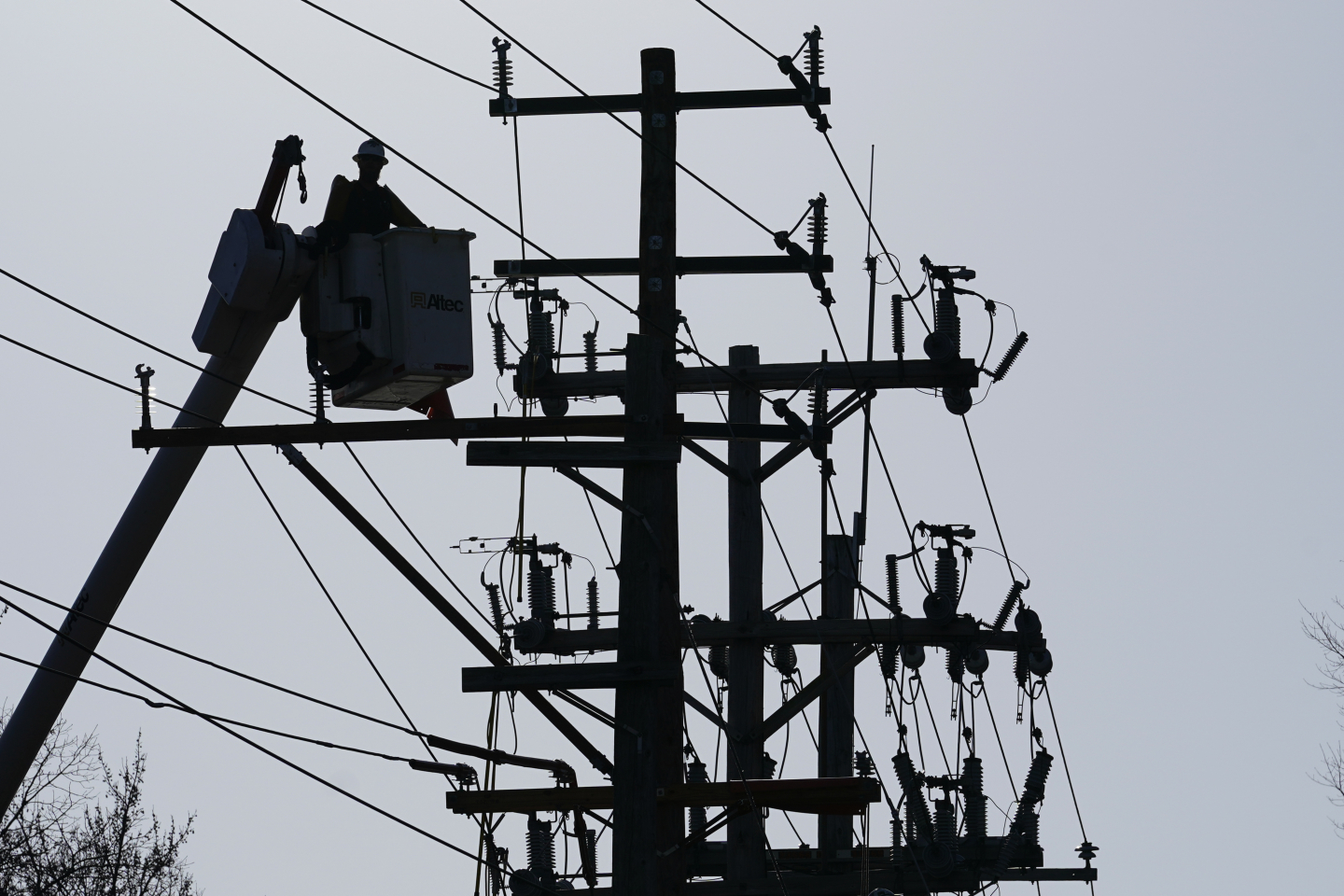
(AP Photo/Susan Walsh, File)
Corrupt Climate Science Poisons Eastern Power Grid Operator
By Gordon Tomb
Once upon a time the job of the PJM Interconnection — operator of the nation’s largest electricity grid — was reasonably straightforward: Keep the lights on. The organization’s mission statement still identifies PJM’s “primary task” as ensuring the power grid’s “safety, reliability and security.”
However, today’s PJM is post-modern. Focused management of transmitting electricity is muddled by notions of carbon dioxide as a toxin and sophomoric visions of pristine energy from the zephyrs and sun. Influenced by woke climate goals, Valley Forge-based PJM says one of its “strategic pillars” is now “facilitating decarbonization.”
Facilitating decarbonization? That means “we are committed to facilitating the state and federal policies that are driving decarbonization,” explains PJM spokesman Jeff Shields.
“PJM is not a policy maker, and we are fuel and technology neutral,” he said. “At the same time, we serve 13 states and the District of Columbia, and 11 of those states and D.C. have some” renewable or clean energy program. “We have…stressed that any energy transition brought on by state or federal policies has to maintain reliability and do it cost-effectively.”
So, despite a technical prowess born of staff steeped in hard sciences, PJM is obliged to bend to political winds emanating from green fantasies of a woke elite. So-called renewable energy programs that PJM accommodates are handouts to the green lobby financed by energy consumers who get no benefit. The environment is not improved. The electrons delivered are no different, only more expensive.
Notwithstanding assurances that reliability and costs remain priorities, there are reasons for skepticism about decarbonization, net zero, or whatever is the mumbo-jumbo of the week. Especially when applied to a region extending from the mid-Atlantic to the Midwest — home of 65 million people and about one-fifth of the U.S. economy.
For starters, it was a partially decarbonized Texas whose wind turbines failed last February during a cold snap, triggering power outages that killed more than 200 people and caused billions of dollars of damages. Currently, only about six percent of PJM power comes from renewable sources, compared to 25 percent in Texas. But how long might that last?
Reporting on efforts to alter PJM market rules to allow more renewables into the grid, Bloomberg quoted an analyst as saying, “More states want to take control of their destiny and achieve a certain mix of power plants, with the whole goal of decarbonizing. They are going to do that, plow through regardless of the market rules, and it’s clear they have that legal right to do that.”
The result, according to the Bloomberg report, “could be a massive buildout of offshore wind on the Atlantic Coast, from Virginia north. That would not only revamp PJM’s entire system, but it could also dethrone natural gas as the country’s No. 1 power plant fuel by 2028.”
That should alarm anyone familiar with the record of wind turbines, as well as solar’s history. Both are expensive, intermittent and unreliable. Reviewing costs to decarbonize the U.S., Francis Menton of the Manhattan Contrarian cites one estimate of $433 trillion, 20 times the annual gross domestic product.
Magical thinking is what energy analyst Mark Mills calls predictions of green technologies becoming large-scale producers of electricity. Building wind, solar and batteries takes 10 times as much material to make the same amount of electricity as do conventional sources, he says.
Meanwhile, coal-fired power plants — traditionally the backbone of PJM reliability — are becoming fewer. One news report put the number of Pennsylvania coal plants closing since 2009 at 14. An industry source reports the number of significant generators remaining in Pennsylvania as 14 individual units located at seven stations. Of those, six of the largest units plan to shut down in a few years.
Reasons for the demise of coal plants include the Obama administration’s “War on Coal” — renewed by the Biden administration. “They’re trying to regulate us out of business,” says a plant worker frustrated that his job is in jeopardy in spite of plants spending billions on pollution reduction.
Another reason has been the economics of competing with historically low natural gas prices and heavily subsidized renewables over the past several years. PJM, as a market maker for competing plants, has long wrangled over whether coal-fired plants are appropriately rewarded for providing the security of on-site fuel storage that gas plants can’t match. PJM suggests in a report’s oblique language that the conversation continues:
“Today, thermal resources supply essential reliability services. Until a different technology can provide a reliable substitute at scale, an adequate supply of thermal resources will be needed to maintain grid stability. PJM and stakeholders must ensure that the market structure provides the right incentives to maintain an adequate supply of these services.”
Speaking elsewhere out the other side of its mouth, the report discusses an “opportunity for strategic regional transmission expansion, grid-enhancing technologies, and an increased need for storage.” This is where billions of dollars are spent to support “green” energy with new power lines, batteries and so on.
So, life is complicated — and expensive and dangerous — when climate alarmism is taken seriously by people who probably know better, or at least should.
“Cowering cravenly in pretense and silence” before political correctness is how professor emeritus of psychology Jordan Peterson described former colleagues at the woke-infested University of Toronto. The same is true, he suggests, of too many CEOs, musicians, artists and writers. Would Dr. Peterson find differently in PJM’s ranks?
Gordon Tomb is a senior advisor with the Arlington, Va.-based CO2 Coalition and primary editor of “Inconvenient Facts: The science that Al Gore doesn’t want you to know.”
From realclearenergy.com